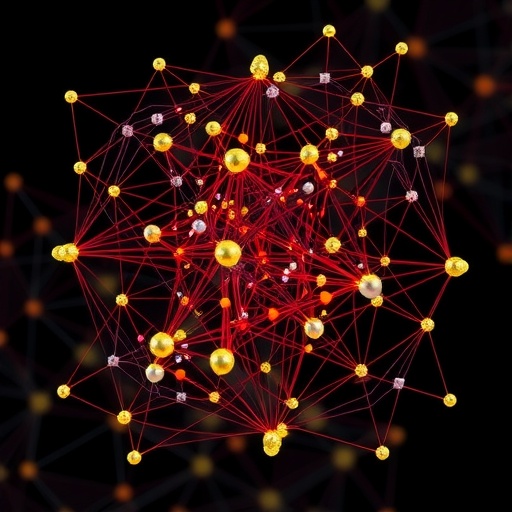In the ever-evolving landscape of combinatorial optimization, researchers are continually searching for innovative approaches to tackle high-dimensional problems effectively. A notable advancement in this area comes from a collaborative research effort led by Li, Gui, and Xue, who have introduced a revolutionary framework known as HypOp. This novel solution seeks to enhance the efficiency of solving constrained combinatorial problems through the application of hypergraph neural networks—a significant leap from previously established techniques based on conventional graph neural networks.
HypOp addresses the complexities that arise in scientific and engineering disciplines when dealing with high-dimensional constraints and optimization tasks. One of the key challenges in this domain is the intrinsic scalability of algorithms, particularly when the computational demands increase significantly with the addition of variables or constraints. This concern is particularly acute when attempting to optimize solutions in areas such as logistics, network design, and machine learning models, which often involve multifaceted relationships and dependencies among variables.
The innovation at the heart of HypOp lies in its ability to handle higher-order constraints seamlessly. By employing hypergraph structures, the framework transcends traditional graph representations, facilitating a more comprehensive modeling of relationships between entities. This shift is crucial because many real-world problems cannot be adequately described by pairwise relations alone. Instead, they require a more intricate observer model that captures the interplay among multiple elements simultaneously.
HypOp’s design not only incorporates advanced neural network techniques but also utilizes a distributed training architecture, which is pivotal for managing larger and more complex tasks effectively. The distributed architecture allows HypOp to leverage multiple graphics processing units (GPUs) concurrently, thereby reducing computation time significantly. This feature is particularly advantageous in contexts where time efficiency is critical, such as real-time data analysis and adaptive system responses to changing conditions.
In their experiments, the researchers meticulously examined the robustness of HypOp against various factors, including the number of GPUs deployed and the strategies employed for distributed partitioning of data. The results demonstrated that the performance of HypOp scales exceptionally well when orchestrated over multiple GPUs, providing a promising avenue for real-world applications in environments where computational resources are inherently constrained.
Furthermore, fine-tuning methods were assessed as part of the experiment to optimize the performance of HypOp across different computational platforms. This element of the research is especially significant, as it underscores the adaptability of the approach. Effective fine-tuning not only enhances performance but also caters to the unique requirements of diverse optimization tasks, making HypOp a versatile tool in the arsenal of algorithm developers and researchers.
To evaluate the reusability of HypOp, the team applied the framework to well-known combinatorial optimization problems, specifically the maximum clique problem and the quadratic assignment problem. The findings were promising—a testament to HypOp’s flexibility in addressing a variety of scenarios beyond its original framework. By validating HypOp’s capability to tackle distinct problems effectively, the researchers have set the stage for its broader application in combinatorial optimization.
What distinguishes HypOp further is its emphasis on providing practical insights for users looking to apply the framework to their specific use cases. Alongside the performance benchmarks, the authors have developed comprehensive guidelines that outline best practices for implementing HypOp in real-world scenarios. This incorporation of user-focused guidance is a crucial component that enhances the framework’s accessibility and usability for both academics and industry practitioners alike.
The implications of this research extend well beyond theoretical advancements. The efficacy of HypOp could revolutionize fields that grapple with combinatorial optimization, unlocking new possibilities in logistics, transportation, telecommunications, and even cloud computing services. By improving the speed and reliability of solving these intricate problems, HypOp offers the promise of innovative solutions that can significantly improve operational efficiencies and decision-making processes.
In conclusion, HypOp stands as a testament to the power of interdisciplinary research in solving some of the most challenging problems in optimization. The integration of hypergraph neural networks and distributed training architectures marks a paradigm shift in how combinatorial problems are approached and solved. As technology continues to advance, the potential applications for HypOp and similar frameworks may only grow, driving forward the frontier of optimization in unprecedented ways.
In summary, the innovative framework proposed by Li, Gui, and Xue not only fills a significant gap in the existing literature but also paves the way for future research and developments in combinatorial optimization. The efforts of the research team underscore the critical importance of collaboration and creativity in tackling complex problems that reside at the intersection of mathematics, computer science, and engineering, heralding a new era of efficient solutions for practitioners and researchers alike.
The robust findings articulated through HypOp lend credence to the assertion that hypergraph neural networks may redefine our understanding and capability to address optimization problems that are becoming increasingly complex in our interconnected world. As researchers continue to build on this foundation, the implications of their work will likely resonate throughout various disciplines, inspiring further innovation and exploration in the expansive field of combinatorial optimization.
Subject of Research: Combinatorial Optimization with Hypergraph Neural Networks
Article Title: Reusability report: A distributed strategy for solving combinatorial optimization problems with hypergraph neural networks
Article References:
Li, X., Gui, J., Xue, W. et al. Reusability report: A distributed strategy for solving combinatorial optimization problems with hypergraph neural networks. Nat Mach Intell 7, 1870–1878 (2025). https://doi.org/10.1038/s42256-025-01141-4
Image Credits: AI Generated
DOI: 10.1038/s42256-025-01141-4
Keywords: Hypergraph Neural Networks, Combinatorial Optimization, Distributed Computing, Optimization Problems, Maximum Clique Problem, Quadratic Assignment Problem, Machine Learning, Graphics Processing Units (GPUs).
Tags: combinatorial optimization techniquesconstrained optimization methodshigh-dimensional problem solvinghigher-order constraints modelinghypergraph neural networksHypOp framework for optimizationinnovative approaches in neural networkslogistics optimization strategiesmachine learning optimizationnetwork design challengesscalability in optimization algorithmsscientific engineering applications





